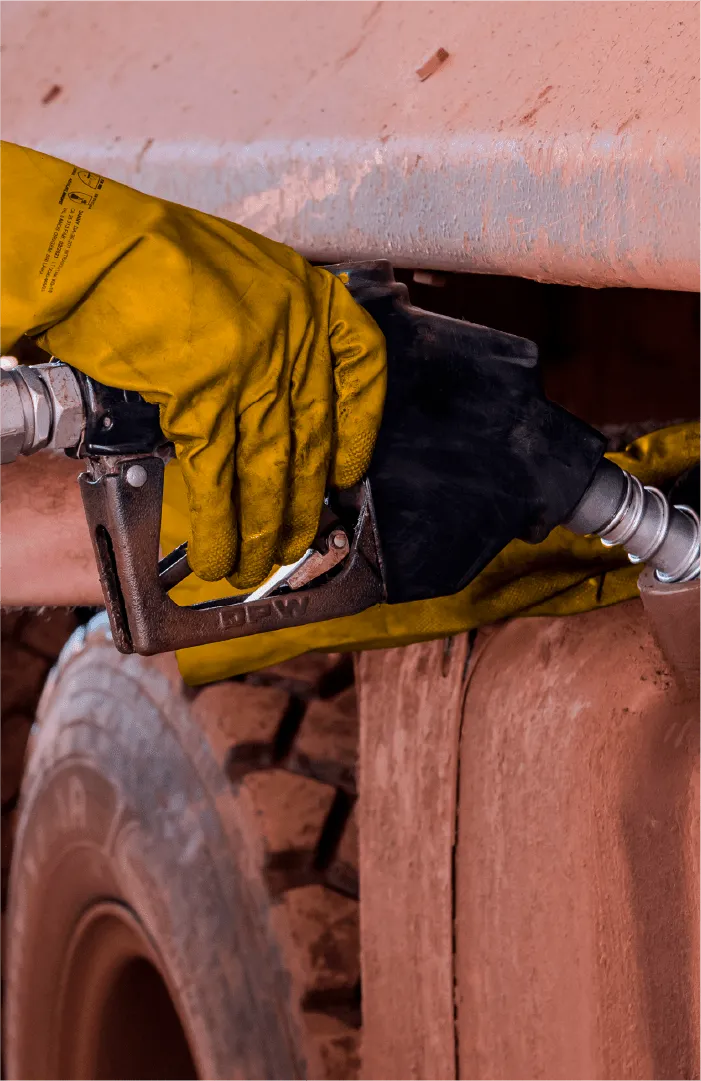You’re having productivity problems in your operation and you don’t know what’s causing the bottleneck. We have the answer! Fleet sizing is a crucial process for the success and efficiency of the operation. It involves determining the number, capacity and model of equipment needed to carry out activities efficiently and economically, since the use of poorly dimensioned equipment is a source of unproductivity, high costs and even mechanical breakdowns.



HOW TO SIZE THE FLEET:

But how can we size the right fleet? Well, as mentioned above, we have to use the right equipment so that there is a certain fluidity at the time of the operation, in other words, to choose the right loading equipment, we have to take a few points into account:
- Capacity of the excavator: volume of material it can carry with each pass;
- Bucket volume: the volume that the truck can carry in one pass.
- Number of passes needed to fill the bucket – ideally three (3) to six (6) passes.
Remember: for accurate calculations, take into account the swelling of materials, which applies after the rock is fragmented, altering its volume.

When sizing trucks, certain points are important, such as truck capacity, bucket size, Average Haul Distance, grade of the ramps, rolling resistance factor, speed and cycle times in general.



TRANSPORTATION CYCLE:

In order to better illustrate a transportation cycle, we have the following flowchart:

Source: Melo, 2020.

With this flowchart, we have a basic idea of the cycle and can move on to the calculations.
The transport equipment cycle is made up of fixed and variable times, including truck movements, queuing times, maneuvering, loading and tipping. In this way, we can obtain the cycle time as follows:



Where:
TCT = Transportation Cycle Time
ED = Empty distance from origin to destination (loading site)
QT = Queuing time
LMT = Loading maneuver time
TT = Tipping time
DF = Distance full
QTT = Queuing time for tipping
MTT = Maneuvering time for tipping
TT = Tipping time



CALCULATING THE NUMBER OF TRUCKS:

But how can we calculate how many trucks we will have to use?
We start from the premise of zero idleness of the loading equipment. In this way, we consider that the number of trucks dimensioned for an excavator should be greater than or equal to dividing the total transport cycle time by the sum of the loading and unloading maneuver times.



Where:
TCT = Transportation Cycle Time
N = number of trucks
LMT = Loading maneuver time



PRACTICAL EXAMPLE:

But the theory can become complex, let’s give you an example. Imagine you had to determine the size and number of trucks if you had the following situation:
Bucket fill factor = 0.9
Material density = 2.455 t/m³
Recommended number of passes = 4
Time per pass = 34 s
Maneuvering time = 0.3 min
Unloading time = 1.1 min
Empty distance = 4.8 min
Distance full = 7.5 min
170 t trucks
19 m³ shovels

With the above data, we can start calculating the bucket volume of our loading equipment per cycle, better known as shovel output:



However, remembering that the ideal is 4 passes per cycle, we multiply the filling capacity of our loading equipment by the number of passes.



The loading time of a truck is given by the product of the number of passes and the loading cycle time, i.e:



Therefore, the truck loading time is 2.27 min. This way, we can calculate the transportation cycle time, considering zero queue time.



Now we need the loading time and the positioning time of the loading equipment so that we can then calculate the number of trucks needed.



And finally, we calculate the number of trucks needed using the cycle time quotient and the sum of loading time and positioning time.



For the proposed conditions, 7 trucks weighing 170 tons are sufficient to handle a 19 m³ load of equipment. Although the calculations are simple, it is important to have reliable data for efficient sizing of the transport fleet.
FAST2 Mine can provide all this attention, carrying out this work for you with the Mining Control module. Find out more about our system!
We have a step-by-step guide to dimensioning the loading fleet on our blog, by clicking here!



